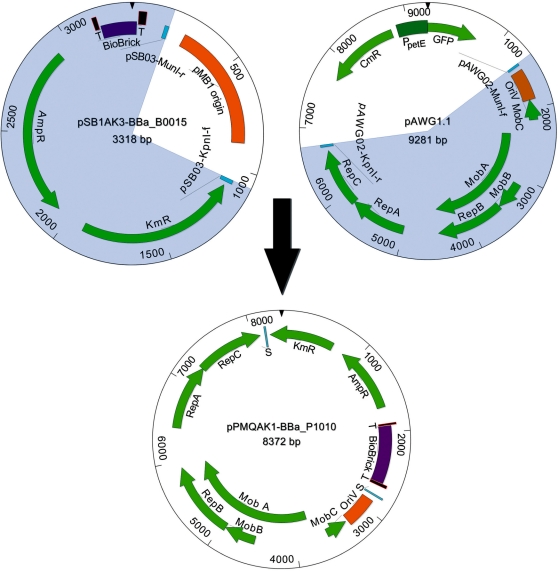Cyanobacteria are appropriate for sustainable, solar-powered biotechnological purposes. Synthetic biology connects biology with computational design and an engineering perspective, however requires environment friendly tools and details about the operate of organic elements and techniques. To allow the event of cyanobacterial Synthetic Biology, a number of molecular tools had been developed and characterised:
(i) a broad-host-range BioBrick shuttle vector, pPMQAK1, was constructed and confirmed to copy in Escherichia coli and three totally different cyanobacterial strains.
(ii) The fluorescent proteins Cerulean, GFPmut3B and EYFP have been demonstrated to work as reporter proteins in cyanobacteria, in spite of the robust background of photosynthetic pigments.
(iii) Several promoters, like P(rnpB) and variants of P(rbcL), and a model of the promoter P(trc) with two operators for enhanced repression, had been developed and characterised in Synechocystis sp. pressure PCC6803.
(iv) It was proven that a system for focused protein degradation, which is required to allow dynamic expression research, is working in Synechocystis sp. pressure PCC6803. The pPMQAK1 shuttle vector permits the use of the rising numbers of BioBrick elements in lots of prokaryotes, and the opposite tools herein applied facilitate the event of new elements and techniques in cyanobacteria.

Engineering plastid genomes: strategies, tools, and purposes in primary analysis and biotechnology.
The small bacterial-type genome of the plastid (chloroplast) will be engineered by genetic transformation, producing cells and crops with transgenic plastid genomes, additionally known as transplastomic crops.
The transformation course of depends on homologous recombination, thereby facilitating the site-specific alteration of endogenous plastid genes in addition to the exactly focused insertion of international genes into the plastid DNA.
The know-how has been used extensively to investigate chloroplast gene features and research plastid gene expression in any respect ranges in vivo.
Over the years, a giant toolbox has been assembled that’s now practically corresponding to the strategies accessible for plant nuclear transformation and that has enabled new purposes of transplastomic know-how in primary and utilized analysis.
This assessment describes the state of the artwork in engineering the plastid genomes of algae and land crops (Embryophyta). It offers an outline of the present tools for plastid genome engineering, discusses present technological limitations, and highlights chosen purposes that show the immense potential of chloroplast transformation in a number of key areas of plant biotechnology.

